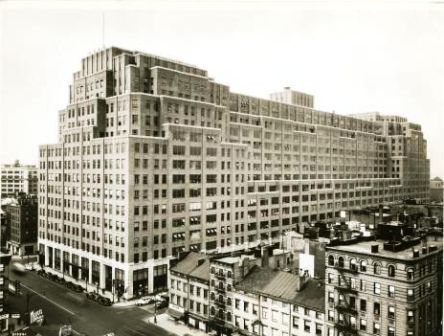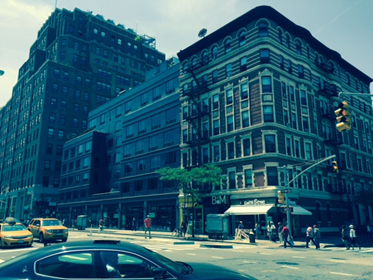In 2006, Google leased two floors measuring 300,000 SF at the block-long 111 Eighth Avenue. At 2.9 million square feet, 111 is the fourth largest building in New York. Apart from the fact that the new space was much more efficient than other NYC offices, why did Google decide that it had to move from the 100,000 SF it occupied at the time on four floors of 1440 Broadway?
(ExpertTitleTips.com)
New York had seen the rise and fall of the dot-com revolution in the years between 1998 and 2001. That’s when the term Silicon Alley was first coined to describe the area around the Flatiron Building at the intersection of Fifth Avenue and 23rd Street. Since its early days as New Amsterdam, New York has been a magnet for entrepreneurs (in the 1620s beaver pelts were the rage) and the concomitant creative brainpower. That creative brainpower flocks today to the TAMI (Technology, Advertising, Media and Information) companies, which now challenge FIRE (Finance, Insurance and Real Estate) companies as the largest number of private sector space users in the city.
Plus: Today’s Madison Avenue | Raise your hand and define your path
Arguably, New York is able to offer much more than Silicon Valley: For starters think fashion, art, publishing, advertising, theater and the like. Anyone who knows Palo Alto, San Jose and Mountain View — whether from living and working there or from the TV series “Silicon Valley” — will immediately realize that neither Silicon Valley nor San Francisco itself can compete with New York in any of the above fields. It just took New York a little while to realize that not all tech originates in a garage.
Also: Why corporates don’t want a corporate workspace anymore | Now is the time to get the workplace right
Earlier this year, Silicon Alley beat out Silicon Valley (albeit barely) in the total number of startup funding applications. Google’s growing presence in the city (and that of companies like Facebook) has much to do with this. The state of affairs was acknowledged Mayor de Blasio in 2014 by the establishment of Digital NYC, a sort of “meet-me” room for the tech industry. He was building on the recognition several years ago by then Mayor Bloomberg of a potentially tech-friendly New York.
So, now we know why Google determined that New York was to serve as one of its major hubs. But why did the company choose 111 Eighth Avenue, built in 1932 at the behest of the Port Authority of New York and New Jersey so it could serve as a cargo warehouse and station?
(NYPL Collection)
The huge building had already undergone one revolution when it was sold in 1996 to Taconic, which turned most of the building into a “telecom hotel” with a “meet-me” room enabling multiple telecom carriers to “speak” with one another with greatly enhanced connectivity. These carriers also leased space in 111 Eight Avenue as data centers in this former warehouse. This was attractive to Google as it sought to establish a stronger position in New York and globally. Ultimately, with a view to control its own destiny, Google acquired the entire building in 2010.
Google’s voracious appetite for space could not be satisfied quickly enough at 111 Eighth Avenue, and it was forced to look elsewhere to house its increasing roster of very smart employees. It did not look far afield, and its craving was satisfied just down the block at 75 Ninth Avenue (Chelsea Market) and 85 Tenth Avenue.
The image above shows 111 Eighth Avenue and next to it the new condominium apartment building 127-137 Eighth Avenue. On the far right is 141 Eighth Avenue which appears in the original photo of the building above and has been there for more than 100 years.
As long as Google and the other larger Internet companies serve as crowd-pullers for startups, New York will continue to grow as a TAMI hub. Another Google could very well be waiting somewhere in the wings in NYC, but we will have to wait a while to see if this happens.
A lawyer by training and background, Richard is Executive Director of Colliers International in New York. For the last 20 years he has advised corporate tenants globally on how to avoid the pitfalls that landlords lay in store for them. When not working with clients or thinking of innovative ways to assist them, Richard spends his time immersed in history, theater, travel and reading.

 Colliers Insights Team
Colliers Insights Team




 Coy Davidson
Coy Davidson
 Beth Young
Beth Young